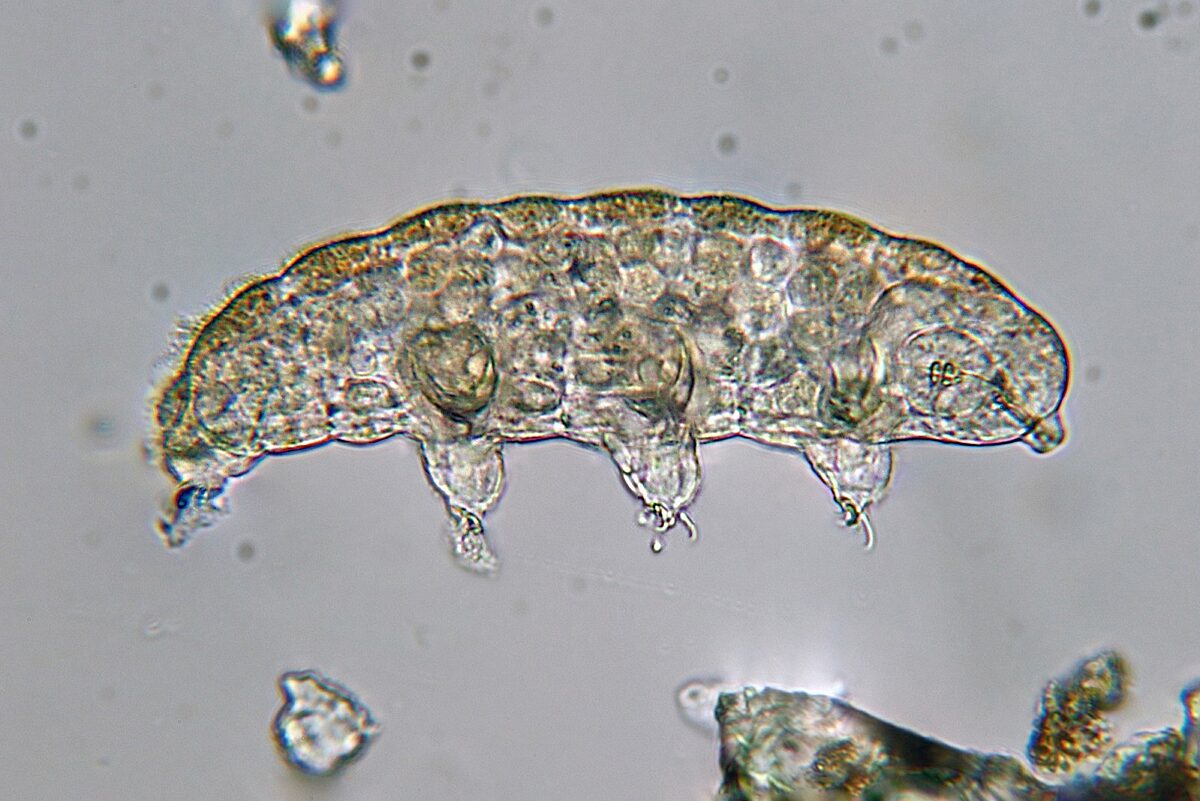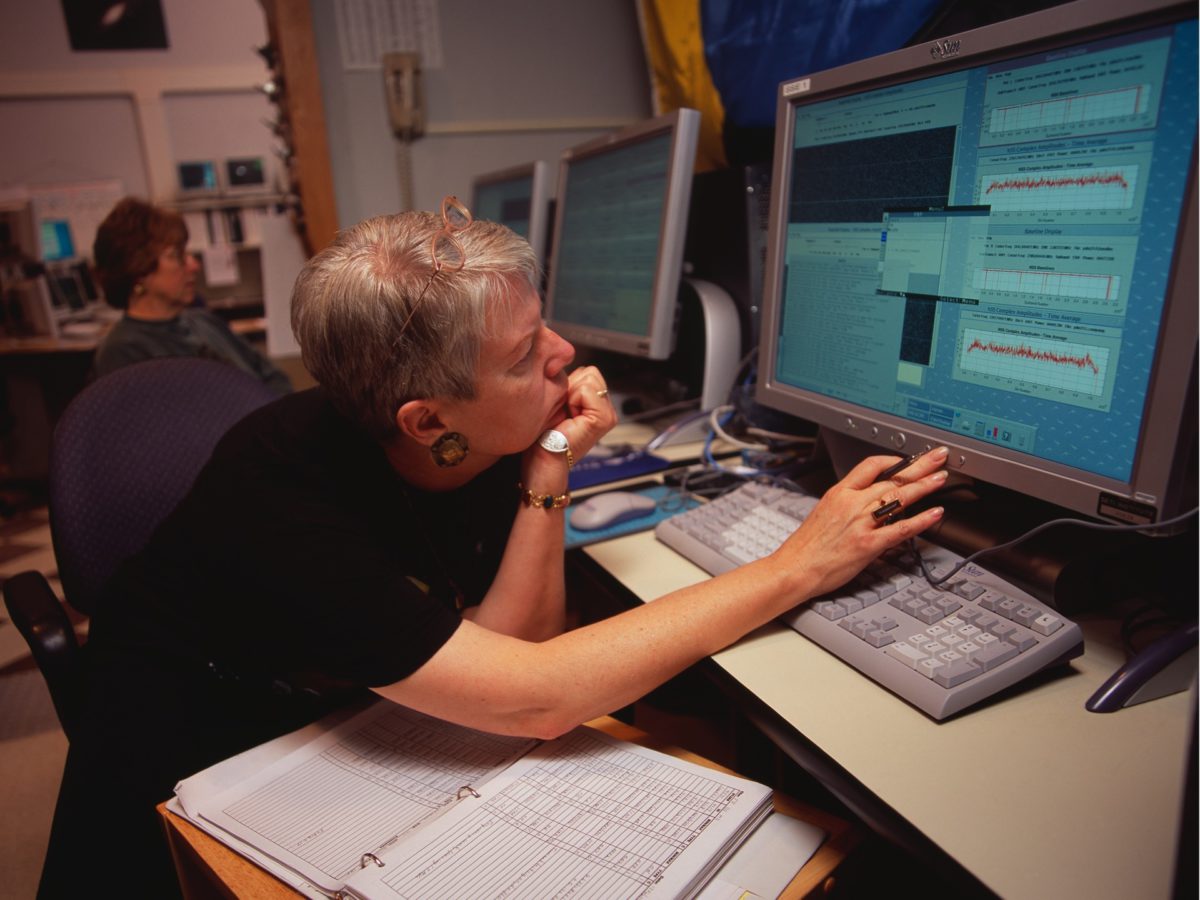Kate Howells • Jun 07, 2023
Are aliens real?
Answers about alien life, from microbes to UFOs
The possibility of extraterrestrial life has always fascinated humans. People have speculated about alien life on Mars and other nearby planets ever since we realized they were different from the other points of light in the night sky. Today, even though our technological capabilities have allowed us to study those worlds up close and even peer at (and listen to) planets around other stars, we still don’t have a concrete answer to the question of whether we are alone in the Universe.
The lack of evidence of life beyond Earth doesn’t mean we don’t have any idea what could or should be out there. The more we learn about the Cosmos — from the planets and moons in our Solar System to the great expanse beyond — the more confident we become that alien life must be out there.
Lots of people believe in aliens, although this belief tends to be based on movies and UFO claims. But science provides insights for the likelihood that we’re not alone in the Universe, and can answer some of the biggest questions people might have about what kind of life is most likely to actually be out there.
How likely is it that alien life exists?
To frame the question of whether alien life exists in another way, we might ask how likely it is that Earth is the only world in the Universe where life has developed.
The observable Universe may contain 2 trillion or more galaxies. Our Milky Way galaxy alone is thought to contain at least 100 billion stars. As exoplanet research continues to uncover the prevalence of planets around other stars, it looks increasingly likely that the vast majority of stars in the Universe have at least one planet around them. And as the exploration of our Solar System has shown us, moons can also be hospitable to life as we know it.
These factors, taken together, suggest that there is a mind-boggling number of worlds — 20 sextillion, or 20 billion trillion — to consider when asking whether we’re alone. So, is Earth one in 20 sextillion? Or with that many worlds out there, is it more likely that life has emerged more than once?
“Two possibilities exist: either we are alone in the Universe or we are not. Both are equally terrifying.”
-Arthur C. Clarke, science fiction author and former Planetary Society board member
What do we mean when we say aliens?
For many people, the word “alien” conjures up images of little green men — beings that are at least somewhat similar to humans in appearance. But the aliens that astrobiologists (scientists who study the possibility of extraterrestrial life) expect to find tend to be a lot smaller. Based on the history of life on Earth, the most likely form of alien life is microscopic.
For the first 3 billion years of life’s existence on Earth, all of it was microscopic. Microbes were even responsible for filling our atmosphere with oxygen long before plants evolved. Today, microbes still make up a large portion of Earth’s life forms, and they thrive in even the most inhospitable environments like super-heated deep sea vents, acidic pools, and thick beds of ice. Because they represent an early and longstanding stage in the evolution of life and can exist in a huge variety of conditions, microbes are the most likely kind of organism we’d find on other worlds.
You wouldn’t be able to see these tiny beings without a microscope, so trying to see them through a telescope is pointless. But when searching for life in our Solar System or beyond, we can look for indirect signs of their presence: biosignatures (signs of biological processes) like atmospheric gasses that only living beings tend to produce.

Where might aliens exist?
It’s possible that there is alien life within our Solar System. As we’ve learned from NASA’s extensive Mars exploration program and missions from other space agencies, the red planet was once a warm, watery world that could have been home to life. Although we haven’t found signs of it yet, it’s still possible that microscopic life could still exist there. The moons of Jupiter and Saturn also have potential for hosting alien life, since many of them have liquid water under their icy crusts. The growing field of exoplanet research is also yielding new possibilities for life beyond our Solar System. As we discover planets in other star systems, we can also look at their atmospheres for biosignatures — and maybe even listen for signs of intelligent life.
Are there intelligent aliens out there?
With billions of trillions of planets and moons in the Universe, it’s also very unlikely that Earth is the only home to intelligent life.
Although humans would say we’ve been an intelligent species for hundreds of thousands of years, distant aliens wouldn’t have been able to detect that we were any smarter than microbes until we started developing technology. When looking for intelligent alien life, we look might for things like radio or laser signals being transmitted, industrial pollutants in an atmosphere, widespread use of artificial lights illuminating a planet’s night side, and other things that can be detected from afar.
Since about the time humans invented the means of communicating by radio — i.e. using electromagnetic radiation — we’ve been looking for this kind of transmission coming from other places in space. Now that we know how to send information via laser signals, we also look for these in distant space. These are both part of a field of study known as SETI — the search for extraterrestrial intelligence.

After all this time listening, we still haven’t detected any undeniable alien signals. This prompts the question, “If intelligent life exists out there, why haven’t we heard from them?” This question is the basis of the Fermi paradox, named after Italian-American physicist Enrico Fermi. The Fermi paradox points out that if there were lots of alien civilizations out there capable of interstellar communication or even travel, we should have received signals by now — or even visitors. The fact that we haven’t suggests that the development of technologically advanced alien life might be very uncommon. We might not be the only spacefaring, radio-communicating species in the Universe, but our nearest neighbors might be unfathomably far away — too far to detect using the limited means we have available to us.
Are UFOs or UAPs aliens?
Unidentified flying objects (UFOs), now more commonly known as unidentified aerial phenomena (UAPs), have captured people’s imaginations for generations. Despite the widespread belief that aliens are responsible for UFO and UAP sightings, there is absolutely no concrete evidence to support it.
By definition, UFOs and UAPs are just things that aren’t identifiable — maybe because a photo is too blurry, or just because the person seeing the object doesn’t know what it is. But for many people, aliens are responsible for these mysterious sightings. There is widespread belief, especially in the United States and other Western countries, that aliens regularly visit Earth, maybe just observing us but possibly even abducting people or teaching us advanced building techniques. Government agencies have publicly investigated some of these sightings, and although some of the UFOs and UAPs have remained unidentifiable, none of the investigations have turned up any evidence of alien visitors. And overall, the sociological and psychological explanations for why people are so keen to believe that aliens are visiting Earth are much more convincing than the abduction or UFO sighting claims themselves.
The search must go on
Although there’s no evidence yet that aliens are out there — let alone that they’ve come to visit us — the likelihood of extraterrestrial life is so high that we simply must keep searching.
With every mission to explore another world, every space telescope peering at a distant star system, and every radio telescope listening for signals from another civilization, we Earthlings are learning more about the Cosmos we inhabit, and in doing so, about ourselves and where we come from. And even if we never find other life forms beyond our planet, there’s comfort in knowing that in the vastness of the Universe, we’re almost certainly not alone.
Support our core enterprises
Your support powers our mission to explore worlds, find life, and defend Earth. You make all the difference when you make a gift. Give today!
Donate

 Explore Worlds
Explore Worlds Find Life
Find Life Defend Earth
Defend Earth

